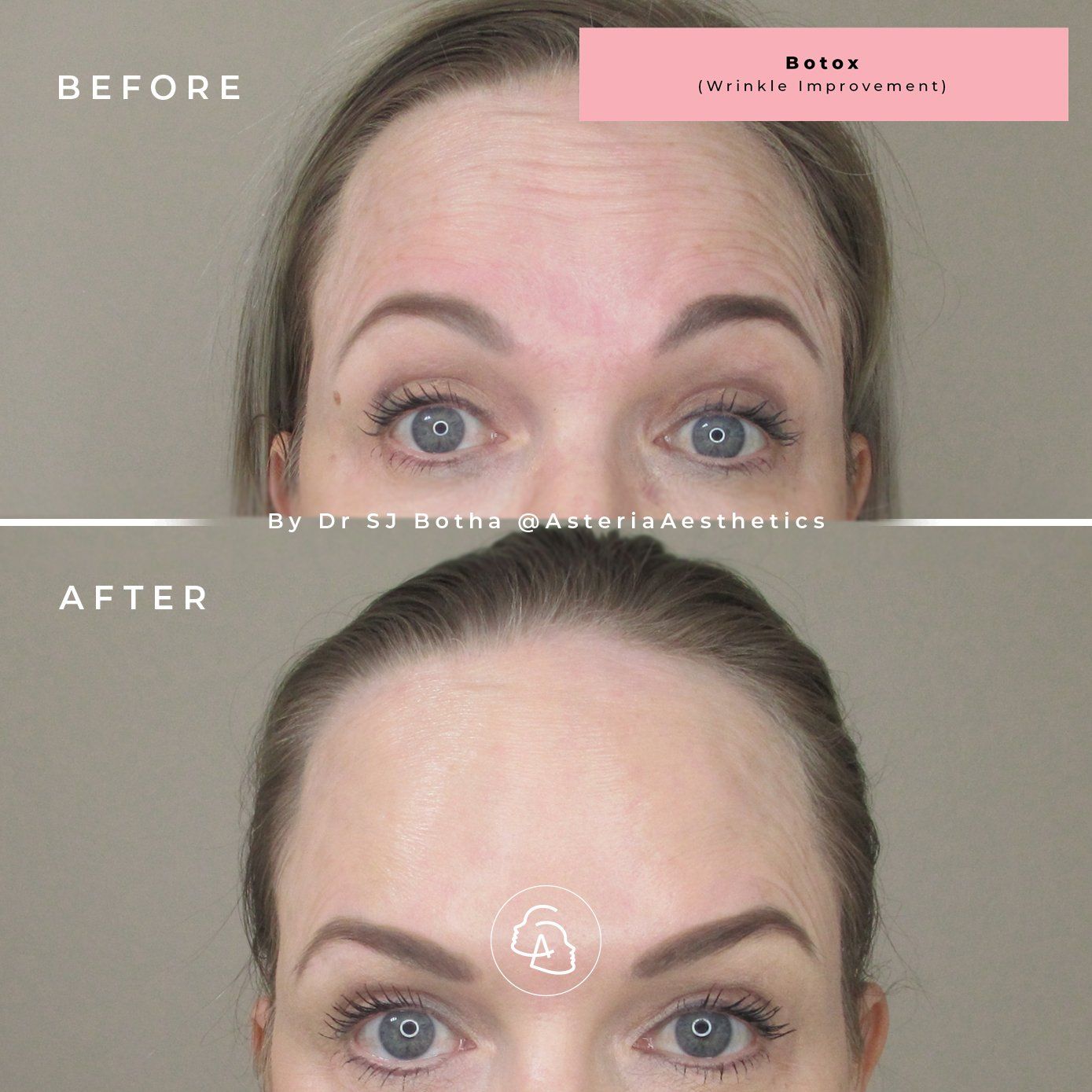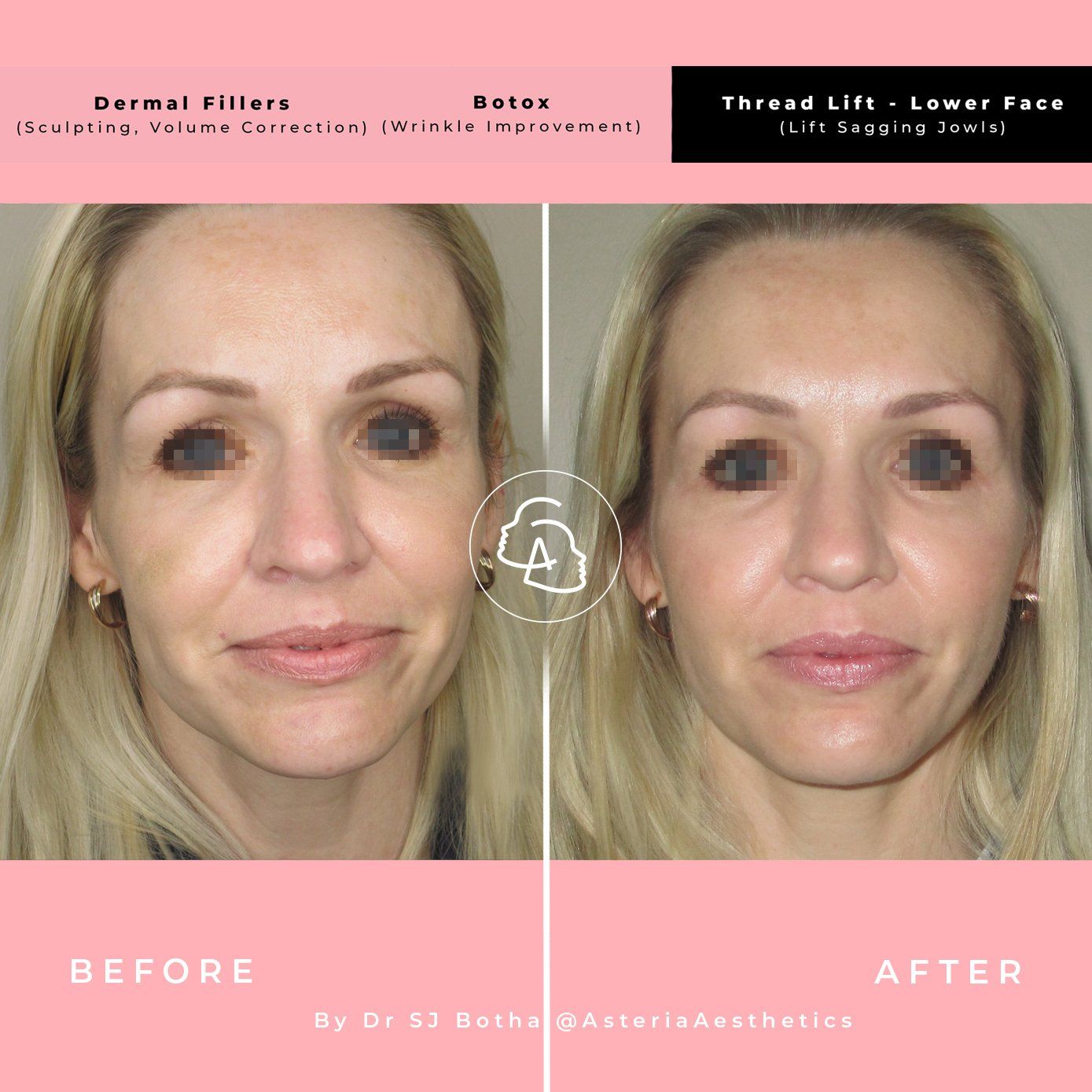BOTOX
Botox cosmetically improves the appearance of wrinkles by temporarily paralyzing the underlying muscles hence giving the skin and face a more youthful appearance.
Botulinum toxin is a purified protein substance derived from bacteria, that blocks nerve signals to the muscle in which it was injected. Without a signal, the muscle is not able to
contract. As a part of the aging process the skin becomes less elastic and flexible which is why wrinkles and facial lines occur.
Specific Treatment Areas
- Forehead Lines
- Frown Lines
- Crow’s Feet (Lateral Orbital Lines)
- Bunny Lines (Transverse nasal)
- Peri-oral Lines (Smoker’s Lines)
- Marionette Lines
- Mentalis Dysfunction (Chin “Dents”)
- Vertical Platysma Bands
- Brow
- Hyperhydrosis or Hyperhidrosis (excessive sweating
How Does It Work?
BOTOX contains botulinum toxin, which when injected into your skin, relaxes the underlying muscles and soothes out the overlying skin. This blocks the signals from the nerves to the muscles so they relax and soften instead of contract.
Most patients choose BOTOX treatment to reduce the appearance of wrinkles such as forehead lines, crow’s feet, and lines around the mouth. BOTOX is also used as a preventative method to stop wrinkles from getting bigger and hence the smaller the wrinkle, the less BOTOX needed.
Results
When treated for full correction, Botox can last 3-4 months and sometimes even 6 months.
With minimal Botox, short term results lasting 6-8 weeks can be achieved.
Frequently Asked Questions
We have the answers you need...




